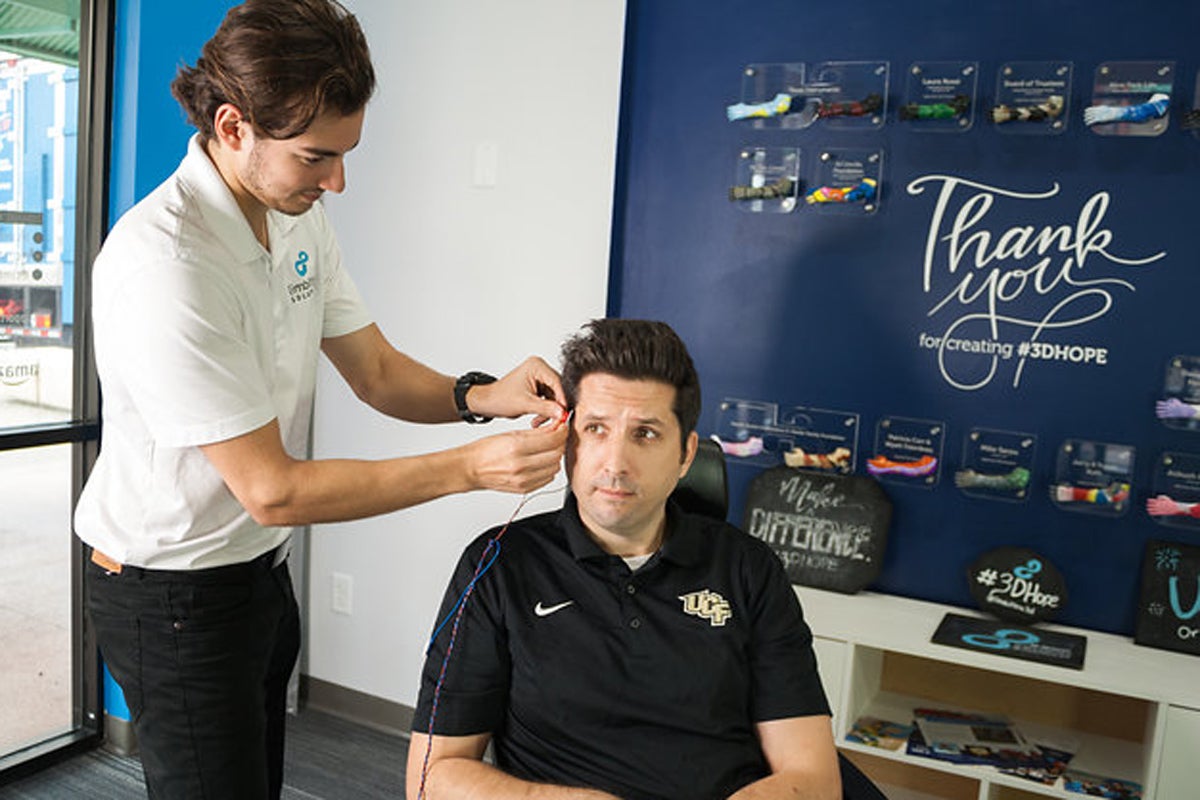Limbitless Solutions is working with researchers at Mayo Clinic in Jacksonville to complete a clinical trial for a technology that allows patients to use facial muscles to control their wheelchairs.
The technology, nicknamed Project Xavier, is being tested and evaluated by Mayo Clinic neurologist Björn Oskarsson. He and his team will assess if Xavier improves the independent mobility and quality of life of patients with Amyotrophic Lateral Sclerosis, a progressive neurodegenerative disease that affects nerve cells in the brain and the spinal cord.
Xavier uses electromyography sensors, placed on the patient’s temporalis muscles, to control a power wheelchair or vehicle. When the user clenches his or her jaw in various ways, the wheelchair will respond by moving forward, backward, left or right. The technology holds the promise of helping improve the lives of thousands of people who live with a number of neurological conditions that reduce their mobility.
“Being able to evaluate the technology in an effort to provide a meaningful difference for ALS patients is incredibly moving to our team,” says Limbitless Solutions president Albert Manero ’12 ’14MS ’16PhD. “Translating the design work in the lab to the clinical environment has been our goal, and the Mayo Clinic investigators have been incredible to work with.”
ALS is a heterogeneous disease involving motor neuron death, resulting in progressive weakness and disability. Patients with ALS slowly lose their ability to use their limbs and most muscle function. Often facial muscles are spared until late in the disease, which is documented in the journal Neurology. This group could potentially benefit from Limbitless Solutions’ latest innovation.
Limbitless Solutions, based at UCF, launched in 2014 and is most notably known for developing 3D-printed, inexpensive prosthetic arms for children and providing them at no cost to families around the world. The group formed when Manero and a few of his fellow students at UCF responded to a Central Florida mother who asked for help for her 6-year old son who was missing an arm. The group has continued its work. Last summer, the 3D-printed bionic arms were approved for clinical trial with the Oregon Health & Science University, the first clinical trial of its kind. Last month published its first peer-reviewed research article about their work with the bionic arms in the International Journal of Environmental Research and Public Health.
The core EMG technology used for the 3D-printed bionic arms is used to control the power wheelchair.
Project Xavier started when Manero was inspired by a friend with a neuromuscular condition to explore how the Limbitless Solutions team could leverage their bionics research for limited-mobility individuals.
“Working on Project Xavier for the past two years has been absolutely incredible,” says Juan Vila, a UCF senior studying mechanical engineering. “I have had the privilege to take my knowledge in engineering and apply in a way that can empower confidence in the lives of individuals around the world.”
Limbitless Solutions hopes Project Xavier — named after the comic book X-Men leader Professor Xavier — provides an opportunity to people with limited or no mobility to continue their independence as long as possible. Tasks that usually depend on assistive personnel to push the user in a wheelchair will be easier and less time consuming to perform, Manero says.
The muscle flex patterns used to power the wheelchair are designed to be very intuitive and easy to pick up. Limbitless hopes that after just a little practice, users will be able to drive the wheelchair, even in crowded areas, with ease. The control mechanism patent is in review.
For more information on Project Xavier and Limbitless Solutions, visit https://limbitless-solutions.org/projects/xavier/.




